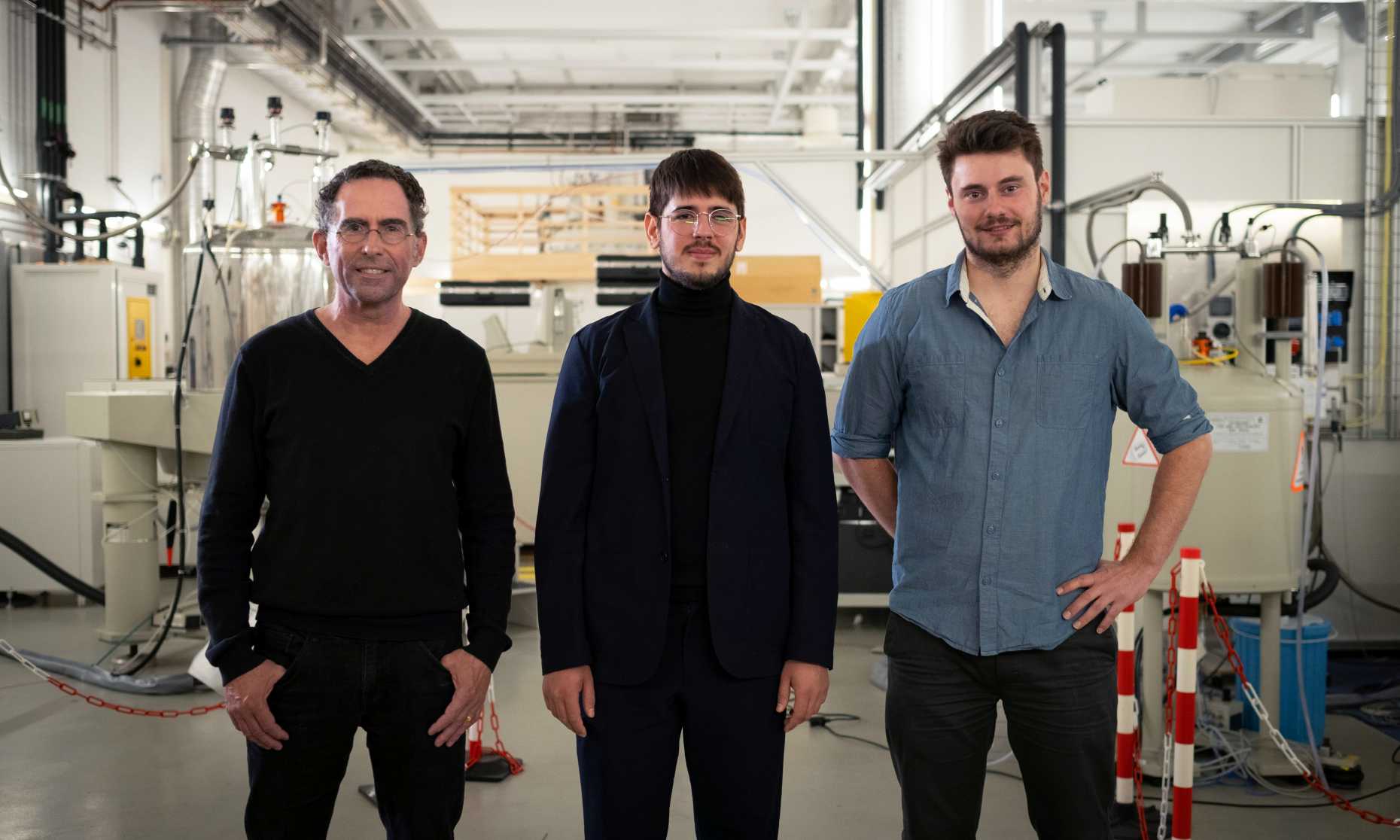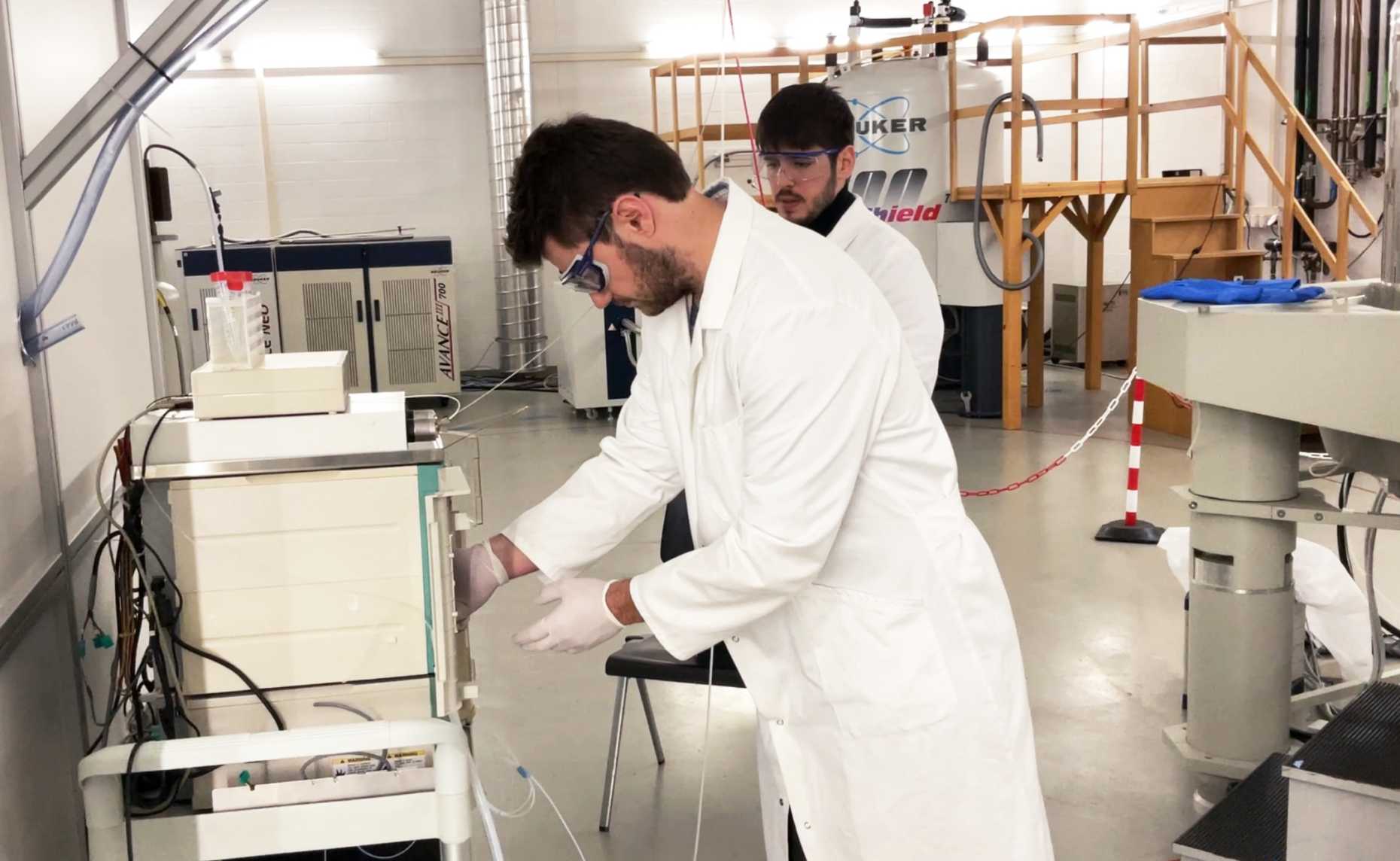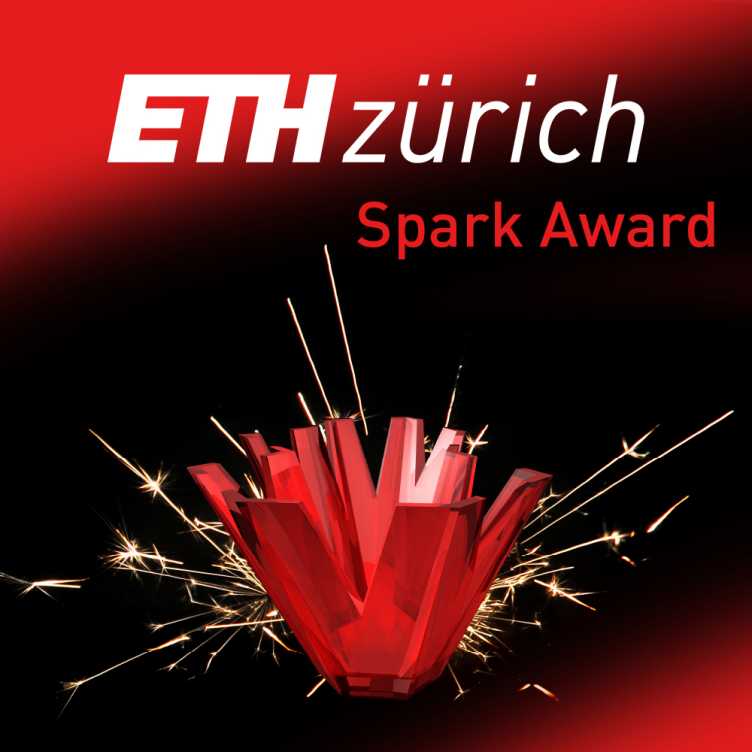Clear NMR results within seconds
- D-CHAB
- LPC
Until now, it took up to an hour to obtain usable results when using NMR to study the interactions of molecules, and even then, the results were not always clear enough for interpretation. Roland Riek, Felix Torres and Matthias Bütikofer from the LPC have developed a method that delivers NMR results in seconds, provides an improved measurement signal, and saves material costs. Now, they have been nominated for the Spark Award 2022 and have big plans.
The pandemic may have slowed things down, but necessity is the mother of invention. Postdoc Felix Torres and PhD student Matthias Bütikofer from the Laboratory of Physical Chemistry at D-CHAB can tell a story about it. In Professor Roland Riek's group, the two are investigating the structures, features and intermolecular interactions of biological macromolecules using nuclear magnetic resonance (NMR). "During the pandemic, we felt the urge to contribute and started to screen molecules against the main protease of SARS-CoV-2 using standard NMR experiments and were quite unhappy with the quality – despite all the work, time, and cost of the expensive materials," Felix Torres recalls, "we thought: There must be a better way."

The gamble of NMR and its solution
In NMR, atomic nuclei are exposed to a strong magnetic field and irradiated with radiofrequency. The nuclei release the absorbed energy in the form of radio waves. The resulting signal allows deep insights into the molecular world, enabling, for example, the study of the interaction between a drug candidate and its target molecule – a necessary information for finding and developing drug substances. "NMR can be used here for any type of target substance and is quite specific. The problem is that the method is very insensitive. Because of the background noise, it is often difficult to get a clear signal that can be interpreted," Torres explains. "It takes between 30 minutes and an hour," Matthias Bütikofer adds, "which means that, depending on the number of samples, the whole process can drag on for weeks – and yet the result remains a gamble."
The researchers finally solved this problem via hyperpolarization through photochemically induced dynamic nuclear polarization (photo-CIDNP). In very simplified terms, this means: the sample is irradiated with light, causing the nuclei spins to align in the magnetic field. This leads to a change in the magnetism of the molecules and, in the end, to a significant improvement in the signal. This approach is also interesting for the mentioned study of interactions between molecules. "We can detect these by comparing the hyperpolarized NMR spectra of two samples: one sample contains small molecules hyperpolarized with light," Torres explains. "This serves as a reference for the second sample, which, in addition, contains the target molecule (i.e. protein). If there is a difference between the two spectra, it means that there is an interaction between the molecules."
Hyperpolarization itself has been known since the 1960s. Up to the 1980s it was further developed especially by physicists. "However, the applications were far from the pharmaceutical field" Felix Torres says, "we were lucky here that our group is so interdisciplinary, and that Professor Riek gave us a free hand to try crazy things. It worked right away."

10.000 samples per day
With their method, the researchers could speed up the various characterization steps – detection, determination, and structure of the molecular interaction at the atomic level – and thus paved the way to optimize small molecules more quickly. Overall, the common spectra recording time of up to 60 minutes has been shortened to a few seconds, cutting the whole process from several weeks to a few days. "Today, we can process 1500 samples per day. For comparison: with the usual NMR method, it was only 700 samples in two weeks," Matthias Bütikofer illustrates. In the future, they plan to increase the speed even further. 10,000 samples per day should be possible.
To get a little closer to this goal, the two researchers aim to found the start-up external page NexMR. "We hope to support medical chemists who need data on interactions, for example, in order to further develop a small molecule into a drug candidate," Torres explains. However, the method has potential for a much broader range of applications. "An application in vivo in living cells to monitor the drug candidate in action would also be conceivable," the researchers say. But that is still up in the air. Now, Felix Torres and Matthias Bütikofer are excited about their nomination for the Spark Award 2022 and look forward to the challenge of a completely different type of interaction – the one between companies and customers – which can start immediately, now that the pandemic seems almost over.
Spark Award 2022
27 April 2022, 17:30 - 19:00
Audimax (HG F 30) of ETH Zurich
Raemistrasse 101, 8092 Zurich

ETH Zurich will present the Spark Award on April 27, 2022. Scientists from ETH Zurich receive the award for the most promising invention, which resulted in a patent application in the past year. The criteria for the evaluation are originality, patent strength and market potential.
Register here for the Spark Award Ceremony
Take a look at the Spark Award Website